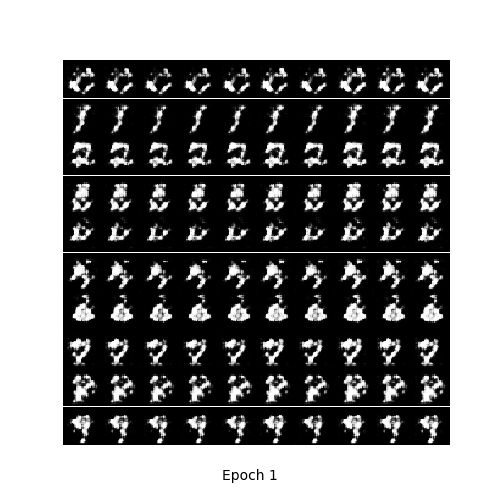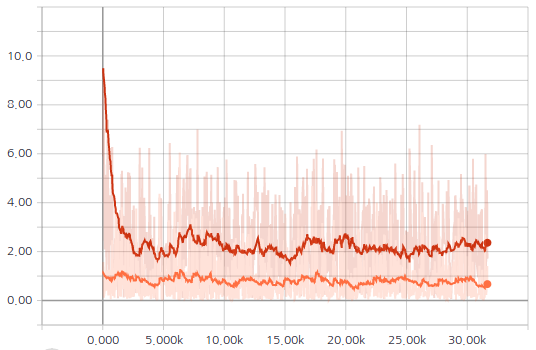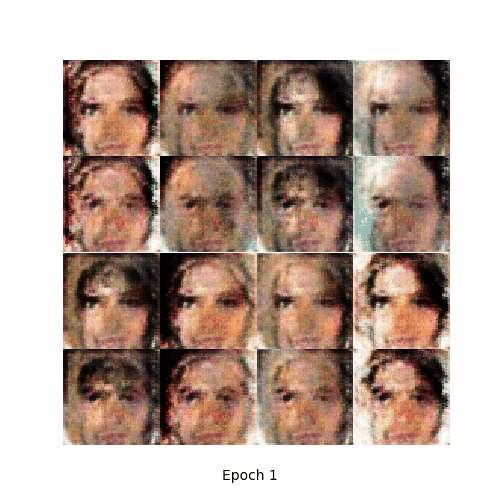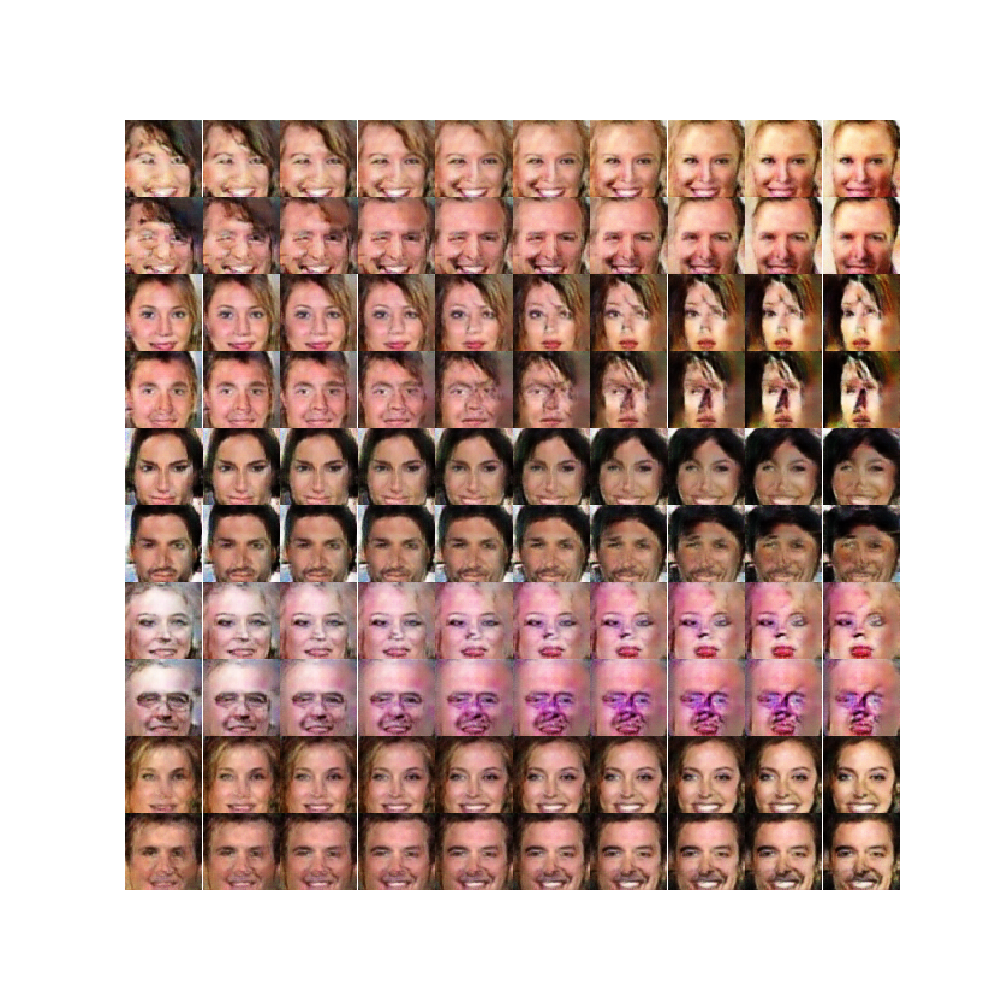Conditional DCGAN
PyTorch implementation of Conditional Deep Convolutional Generative Adversarial Networks (cDCGAN)
Generating MNIST dataset
- MNIST image is resized to 32x32 size image
Network architecture
-
Generator
- hidden layers: Three 4x4 strided convolutional layers (512, 256, and 128 kernels, respectively) with ReLU
- output layer: 4x4 strided convolutional layer (1024 nodes = 32x32 size image) with Tanh
- Batch normalization is used except for output layer
-
Discriminator
- hidden layers: Three 4x4 convolutional layers (128, 256, and 512 kernels, respectively) with Leaky ReLU
- output layer: 4x4 convolutional layer (1 node) with Sigmoid
- Batch normalization is used except for 1st hidden layer & output layer
Results
- Adam optimizer is used. Learning rate for generator = 0.0002 and 0.0001 for discriminator, batch size = 128, # of epochs = 20:
- Loss values are plotted using Tensorboard in PyTorch.
| GAN losses | Generated images |

|
Generating CelebA dataset
- Center region of CelebA image is cropped (108x108 for male/female, 150x150 for black/brown hair) and resized to 64x64 size image
Network architecture
-
Generator
- hidden layers: Four 4x4 strided convolutional layers (1024, 512, 256, and 128 kernels, respectively) with ReLU
- output layer: 4x4 strided convolutional layer (4096 nodes = 64x64 size image) with Tanh
- Batch normalization is used except for output layer
-
Discriminator
- hidden layers: Four 4x4 convolutional layers (128, 256, 512 and 1024 kernels, respectively) with Leaky ReLU
- output layer: 4x4 convolutional layer (1 node) with Sigmoid
- Batch normalization is used except for 1st hidden layer & output layer
Results
- Adam optimizer is used. Learning rate = 0.0002 both for generator and discriminator, batch size = 128, # of epochs = 20:
- Images are generated with fixed noise and varying gender label (1st, 3rd rows: female / 2nd, 4th rows: male)
| GAN losses | Generated images |

| 
|
- Images are generated with fixed noise and varying hair color label (1st, 3rd rows: brown hair / 2nd, 4th rows: black hair)
- Only 87,772 images (black hair: 47,336 / brown hair: 40,436) are sampled from original CelebA data for training.
| GAN losses | Generated images |

| 
|
- Generated images varying latent variable

